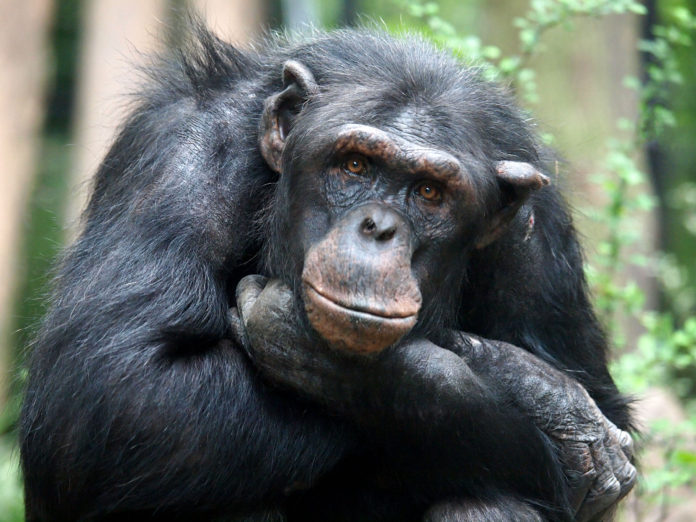Apes are humankind’s closest cousins. That is why they resemble man in so many ways. They look like man (well, early man anyhow), they think like him and now research shows, they can even reason like him.
In a publication in the journal PLOS One, scientists from the Max Planck Institute for Evolutionary Anthropology in Germany wrote that their study suggests that apes can tell if a person holds a false belief. Led by David Buttelman, the team conducted two sets of studies to formulate their hypothesis.
Study 1
The primary objective of the first study was to observe whether apes can identify whether or not an individual held a false belief. This identification is a skill human beings develop between the ages of one and two.
For the study, the research team gathered thirty-four great apes, mainly the chimpanzees, the bonobos and the orangutans. The apes were put under team scrutiny and went through a series of tests in lab conditions.
To begin the research, the apes were trained to ‘be helpful.’ A little reward motivation made that task a little easier. The researchers then went a bit further. Using bright colored boxes, the team taught the apes how to open and close boxes using bolts. With that accomplished, the apes were then ready subjects for the study.
Buttelman and his group describe in their publication how they put two boxes-one yellow and the other blue- before the apes. The boxes had a clear side facing the apes. An experimenter would place an orange object in one of the boxes before two scenarios played out.
In the first one, the experimenter would walk out and return with a helper who would move the object into the second box. Both would use gesticulation to signal they knew of the switch to the apes. Scenario two involved the helper ‘sneakily’ changing the object’s position in the absence of the experimenter. In both cases, the experimenter opened the ‘wrong box’ and acted disappointed.
Buttelman and his team noted that the apes were more likely to help the experimenter by pointing out the ‘right’ box in the second scenario than in the first in a three to two ratio. The second scenario is one in which the experimenter held a false belief of where the object was.
Study 2
To ensure that the apes were not merely helping because they thought the experimenter did not know of the switch, the team conducted a second study.
One scenario was ‘ignorance’ when the switch was again done by the assistant when the experimenter was not in the room. The other was ‘false-belief’- the assistant dropped the object into a box as the experimenter watched but quickly made the swap without him or her noticing. The results showed that the apes helped the experimenter open the ‘correct’ box three out of four times in the ‘false-belief’ scenario but only half the time in the ignorance scenario.
The team then arrived at the conclusion that apes could tell when a person believed something (such as where the object was located) and could tell whether that belief was true or false. “It turns out that humans are not the only animals who have a belief understanding,” Buttelman said.




